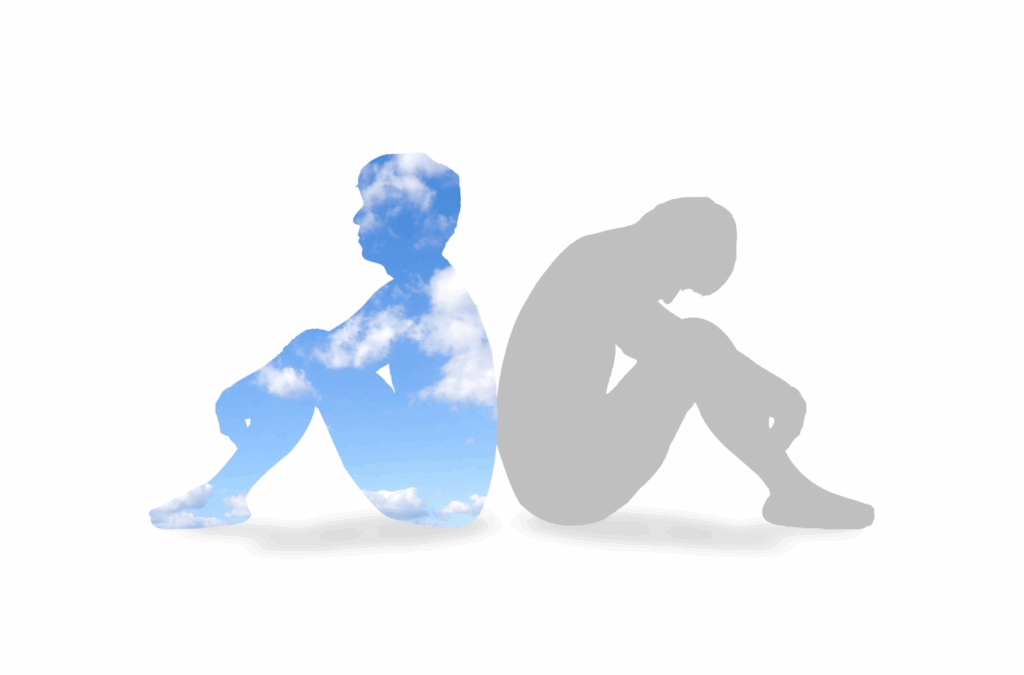Buddhist Meditation: Ancient Wisdom for Modern Life

Buddhist meditation is more than an ancient ritual. It is a living philosophy that continues to guide people who search for balance in an age of noise and distraction. Where modern life pushes us toward speed and constant striving, Buddhist meditation offers a return to simplicity. It shows us how to breathe, how to walk, and how to meet each moment with clarity and compassion.
The philosophy behind Buddhist meditation rests on timeless truths. Impermanence teaches us that everything changes. Compassion reminds us that we are not separate from others. Non-attachment frees us from the endless cycle of desire and disappointment. Together, these insights form the ground on which meditation grows. For practitioners, it is not about escaping life but about facing it directly, with awareness as a companion.
Zen meditation in particular emphasizes simplicity. Sitting quietly, walking slowly, or eating mindfully can transform ordinary acts into expressions of clarity. When life becomes complicated, these practices remind us that peace is found not in adding more, but in discovering the richness of less. A daily meditation practice does not need to be long or elaborate. A few minutes of mindful breathing, a single meal taken with attention, or a short walk with awareness can shift the rhythm of an entire day.
Teachers who carried Buddhist meditation into the West have shown that this practice belongs not only to temples or monasteries but also to homes, workplaces, and crowded city streets. Martine Batchelor and others have spoken of meditation as a way of living rather than a separate discipline. Their voices remind us that the heart of Buddhist meditation is not about adopting a new identity. It is about remembering how to be present, here and now, in whatever life brings.
Modern psychology has also begun to recognize what Buddhist philosophy has known for centuries. Programs such as Mindfulness-Based Stress Reduction and Mindfulness-Based Cognitive Therapy have taken inspiration from Buddhist meditation. Clinical studies show reduced anxiety, improved focus, and greater resilience in those who practice regularly. Ancient wisdom and modern science meet in the same place: the human mind’s natural ability to heal when given space and attention.
In a world filled with pressure and distraction, Buddhist meditation is a way back to simplicity. It is a return to the breath, a reminder that each step can be taken with awareness, and that compassion is a strength rather than a weakness. Ancient wisdom becomes a modern refuge, not as an escape but as a deeper participation in life. Peace is not elsewhere. It is here, in the quiet rhythm of breath, in the simple act of sitting, in the choice to pause and see clearly.
In this article, we will explore the philosophy of Buddhist meditation and its relevance in daily life, from timeless teachings to modern psychology.
The Philosophy of Buddhist Meditation
When we talk about Buddhist meditation, one of the first lessons we encounter is impermanence. Nothing stays the same—our thoughts, our moods, even our breath is always shifting. In meditation this becomes very clear: each inhale arises, fades, and is replaced by the next. Learning to notice this constant change helps us loosen our grip on control and expectations. In daily life, remembering impermanence makes it easier to handle both joy and difficulty. Good moments can be enjoyed without clinging, and hard moments become easier to bear when we know they, too, will pass.
Compassion is another quality that grows naturally through Buddhist meditation. Sitting quietly, we begin to feel how suffering is not just ours alone—it is shared by everyone. From that recognition comes a gentle willingness to be kind, both to ourselves and to others. Practices like loving-kindness meditation strengthen this habit of turning awareness into care. In ordinary life, compassion can be as simple as listening to a friend without judgment, showing patience when someone makes a mistake, or offering kindness to ourselves on a difficult day. Each small act becomes an extension of meditation.
Non-attachment may sound like detachment, but in Buddhist meditation it is the opposite: it is freedom to engage with life fully, without being enslaved by craving or fear. On the cushion, when a thought or desire arises, we let it come and go without chasing or resisting it. With time, this skill spills into everyday situations. We can enjoy a success without being consumed by it, and face challenges without collapsing under them. Non-attachment is not about rejecting the world—it is about meeting each moment openly, resting in presence rather than in grasping.
When we bring these three principles together, they stop being abstract ideas and start becoming something we can actually live. Impermanence teaches us to let go, compassion teaches us to connect, and non-attachment teaches us to stay free. So what does that mean for us, sitting at a desk, walking through a crowded street, or sharing a meal with family?
This is where Buddhist meditation becomes practical. It is not confined to temples or monasteries—it can be practiced in the most ordinary moments. Breathing, walking, even eating can become ways to experience these truths directly. By weaving meditation into daily routines, we discover that the philosophy is not separate from life but a way of meeting life more clearly, with calm and kindness.
Buddhist Meditation in Daily Life
Far from being limited to monasteries, Buddhist meditation belongs in the middle of everyday life. It doesn’t require silence on a mountaintop or hours on a cushion. Instead, it shows up in the smallest, most ordinary moments—when we breathe, when we walk, when we eat. These simple acts, when done with awareness, become gateways to clarity and peace.
Breathing meditation is often the easiest place to begin. In the rush of a workday, pausing for even one minute to notice the inhale and exhale can change the tone of an entire afternoon. The breath is always with us, but in Buddhist meditation it becomes more than oxygen—it becomes a reminder that we are here, alive, in this moment. By returning to the breath again and again, we train the mind to calm itself naturally, without force.
Walking meditation takes something we do every day and turns it into practice. Instead of rushing from one place to another, we notice the ground beneath our feet, the rhythm of each step, the sway of the body. This slows down the constant drive to “get somewhere” and teaches us to arrive where we already are. Even walking from the kitchen to the living room, or from the train station to the office, can become meditation if we carry awareness with us.
Eating, too, is transformed through mindfulness. Rather than scrolling through a phone or hurrying through a meal, Buddhist meditation invites us to taste each bite fully, to notice textures and flavors, and to feel gratitude for the food and the hands that prepared it. A simple bowl of rice or a piece of fruit becomes an expression of connection—to the earth, to others, and to our own body’s needs.
These practices show that meditation is not something separate from daily life. It is woven directly into how we live, moment by moment. By practicing awareness in breathing, walking, and eating, we discover that peace does not have to wait for perfect conditions—it is already available, right here in the rhythm of ordinary life.
Western Teachers on Buddhist Meditation

Western mindfulness teachers, such as Martine Batchelor, have helped bridge Buddhist wisdom and contemporary living. A former Zen nun in Korea, Batchelor emphasizes that meditation is not about adopting a new identity, but about bringing gentle awareness to each ordinary moment—whether in relationships, work, or solitude. Her writings and teachings have guided many in Europe and North America to see mindfulness not as something exotic, but as a natural way of being.
Other influential voices include Jon Kabat-Zinn, who founded the Mindfulness-Based Stress Reduction (MBSR) program in the United States. Drawing from Buddhist meditation, he brought mindfulness into hospitals and clinics, showing its value in reducing stress and supporting healing. Similarly, teachers like Jack Kornfield and Sharon Salzberg introduced Buddhist practices to wide audiences through retreats, books, and courses, often highlighting compassion and loving-kindness as essential parts of the path.
Through these contributions, Buddhist meditation has become accessible far beyond Asia. No longer confined to monasteries, it now speaks to people navigating busy city lives, corporate workplaces, or family responsibilities. The integration of Eastern philosophy and Western psychology has created a global movement where ancient wisdom and modern needs meet—inviting communities worldwide to explore mindfulness, not as a foreign tradition, but as a universal human practice.
Buddhist Meditation and Modern Psychology

In recent decades, psychology has embraced Buddhist meditation as a powerful tool for mental health. Approaches like Mindfulness-Based Stress Reduction (MBSR), developed by Jon Kabat-Zinn at the University of Massachusetts in the late 1970s, and Mindfulness-Based Cognitive Therapy (MBCT), pioneered by Zindel Segal and colleagues, both grew directly from Buddhist practice. These programs have been tested in hundreds of clinical trials. For example, a landmark 2002 study in Psychosomatic Medicine showed that an eight-week MBSR program significantly reduced anxiety and increased immune function in participants.
Further research has confirmed these effects. A 2010 meta-analysis published in Journal of Consulting and Clinical Psychology found that mindfulness-based interventions led to moderate reductions in anxiety, depression, and stress across diverse populations. More recently, a 2014 review in JAMA Internal Medicine concluded that regular mindfulness meditation can improve symptoms of anxiety, depression, and pain—demonstrating the scientific weight behind practices rooted in Buddhist traditions.
These findings highlight how ancient wisdom and modern science meet in the same place: the human mind’s natural ability to heal when given attention and space. What began as teachings on awareness and compassion in Buddhist meditation now forms a bridge to evidence-based psychology, offering both spiritual and clinical pathways to resilience.
Conclusion: Simplicity as a Modern Refuge
Buddhist meditation invites us to step back from the complexity of our lives and rediscover simplicity. Whether through the quiet rhythm of breath or the mindful act of walking, it offers a path toward inner clarity. In a world shaped by constant distraction and pressure, the wisdom of Buddhist meditation reminds us that peace is not found in escape, but in meeting life fully—here and now.
Frequently Asked Questions

FAQ 1: What is Buddhist meditation?
Answer: Buddhist meditation is the practice of cultivating awareness, compassion, and insight through methods like breathing, walking, and mindfulness. It is rooted in Buddhist philosophy but widely used beyond religious contexts.
Real Results: Practitioners often report reduced stress, improved focus, and a deeper sense of peace.
Takeaway: Buddhist meditation is a timeless practice that brings clarity and calm into daily life.
FAQ 2: How can beginners start Buddhist meditation?
Answer: The easiest way is to begin with five minutes of mindful breathing each day. Sit comfortably, notice your breath, and return gently when the mind wanders.
Real Results: Many beginners experience less stress and better concentration within two weeks.
Takeaway: Start small, stay consistent, and let meditation grow naturally.
FAQ 3: What are the main benefits of Buddhist meditation?
Answer: It reduces stress, builds emotional resilience, and fosters compassion. Over time, it can reshape how we respond to challenges.
Real Results: Clinical studies show lowered cortisol levels and improved mental well-being.
Takeaway: Buddhist meditation strengthens both mind and heart.
FAQ 4: How is Buddhist meditation different from mindfulness?
Answer: Mindfulness is one part of Buddhist meditation, but the tradition includes compassion and wisdom practices as well. It offers a broader path of inner development.
Real Results: Combining mindfulness with compassion-based meditation often leads to greater emotional balance.
Takeaway: Buddhist meditation goes beyond awareness to cultivate kindness and insight.
FAQ 5: Can Buddhist meditation help with anxiety?
Answer: Yes, Buddhist meditation is proven to ease anxiety by calming the nervous system and training attention. Breathing and body awareness techniques are especially effective.
Real Results: Programs like MBSR show anxiety reductions of up to 40%.
Takeaway: Buddhist meditation is a natural tool for managing stress and anxiety.
FAQ 6: Do I need to be Buddhist to practice Buddhist meditation?
Answer: No, anyone can benefit from Buddhist meditation regardless of religious background. It is taught worldwide in secular as well as spiritual contexts.
Real Results: Millions of people outside Buddhism use meditation for health, clarity, and emotional stability.
Takeaway: Buddhist meditation is open to everyone.
FAQ 7: How long should I meditate each day?
Answer: Even ten minutes a day can make a difference. Longer sessions may deepen the practice, but consistency matters more than duration.
Real Results: Studies show measurable benefits in mood and focus with just 10–15 minutes daily.
Takeaway: A little every day is more powerful than a lot once in a while.
FAQ 8: What role does compassion play in Buddhist meditation?
Answer: Compassion is central—it transforms meditation from self-focus into a practice of connection. Loving-kindness meditation is a key expression of this.
Real Results: Practitioners of compassion meditation often report stronger relationships and less anger.
Takeaway: Buddhist meditation nurtures compassion as much as awareness.
FAQ 9: How does Zen meditation relate to Buddhist meditation?
Answer: Zen meditation, or zazen, is a form of Buddhist meditation that emphasizes simplicity and presence. It is practiced through sitting, breathing, and observing without judgment.
Real Results: Zen practitioners often describe a deep calm and clarity from regular zazen practice.
Takeaway: Zen meditation is one powerful path within Buddhist meditation.
FAQ 10: What scientific evidence supports Buddhist meditation?
Answer: Research shows Buddhist meditation lowers stress, improves brain function, and enhances emotional health. Neuroscience confirms increased activity in areas linked to focus and empathy.
Real Results: MRI studies reveal stronger prefrontal cortex activity in long-term meditators.
Takeaway: Buddhist meditation is backed by both tradition and modern science.
Related Articles
- Martine Batchelor’s Official Site | Martine Batchelor’s official site offers teachings and resources on meditation, mindfulness, and contemporary Buddhist practice, drawing on her years of training as a Zen nun in Korea


